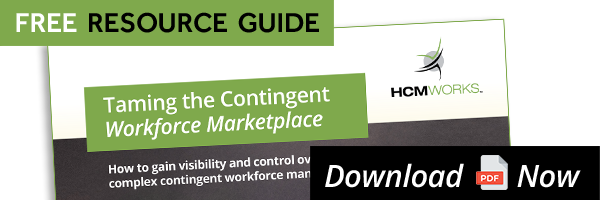Today’s on-demand economy has made it more prevalent than ever before for business owners to hire workers as independent contractors. This shift from a largely nine-to-five permanent workforce to a contingent workforce is convenient for both companies and workers.
The Benefits
Business owners are able to avoid paying employee taxes, health and dental coverage, unemployment insurance, workers’ comp, vacation and sick days and other benefits. Workers enjoy the added freedom and flexibility of setting their own hours and largely playing by their own rules.
The Risk
However beneficial and convenient it is for both sides, the contingent workforce also comes with its own risks. Most notably, worker misclassification lawsuits loom over the companies that choose to hire independent contractors without fully understanding the requirements of that classification status.
Though the labor laws haven’t changed in decades regarding worker misclassification, we are seeing more aggressive enforcement in Canada and the United States in recent years. Business owners who choose to hire a contingent workforce must tackle the issue head on in order to avoid government non-compliance and worker misclassification lawsuits.
If they do not take proactive steps to avoid these issues, they could face harsh consequences, payments in the millions, a bad reputation, and a necessary business closure.
Here’s what you need to do to avoid misclassification lawsuits.
Consider the Issue Head On
Ignoring potential misclassification lawsuits won’t solve the issue. It’s critical for all business owners to approach it head on. Weigh the pros and cons of hiring independent contractors and discuss these factors with your board and investors. Make sure everyone agrees that a contingent workforce is the best route to take before you start hiring contractors.
Know the Difference between an Employee and an Independent Contractor
Though many business owners choose to classify true employees as contractors to avoid additional costs and headaches that come with payroll and compliance, many do so because they genuinely believe that they are working within the law. That’s because they’re not familiar with the differences that separate employees from contractors. Although the misclassification is done innocently, these companies can still face worker misclassification lawsuits.
Reclassify Early
If you first hire workers as contractors and eventually choose to put them on the payroll as company employees, it’s best to do it early, when you have less than 20 workers. Though you can still reclassify them later, the process becomes riskier and more burdensome.
Outsource Your Contingent Workforce Payroll
Most business owners do not have the knowledge and experience needed to consider all of the necessary factors that determine whether a worker is in fact an independent contractor.
If the thought of facing potential misclassification lawsuits scares you, don’t chance it. Outsource your continent workforce payroll to professionals who have the expertise needed to get it done right. You can offload the burden and stresses associated with this important task.
Although you will have to pay a payroll provider, the money spent will be worth the millions in potential savings you’ll receive from avoiding worker misclassification lawsuits. You won’t have to pay owed back wages, overtime, expenses, or back taxes when your employees are all properly classified thanks to the help of a qualified payroll provider.
Invest in Contingent Workforce Consultation Services
To avoid class-action lawsuits, your company should consider investing in contingent workforce consultation services. Contact a specialist who can help you properly classify all of your current and future workers in order to fix classification errors early if they exist, ensure that you fully understand the differences between employees and contractors and that ensure that you’re always working within the law.
Worker misclassification is no joke. Protect your business from lawsuits by following these steps.



